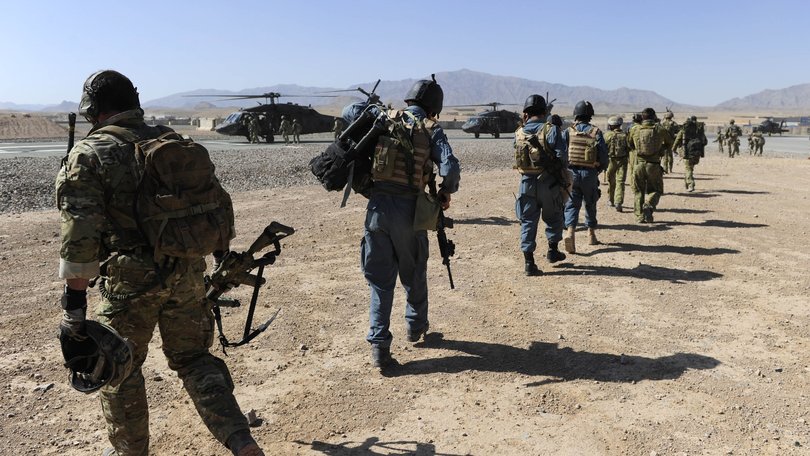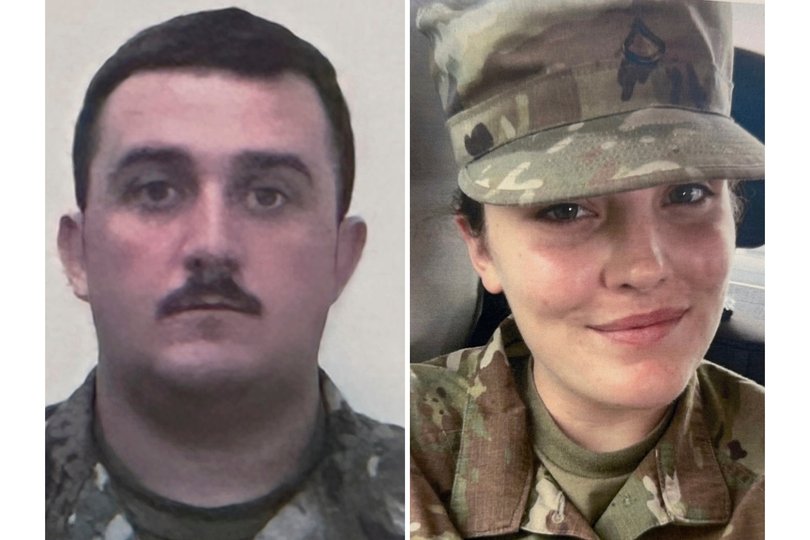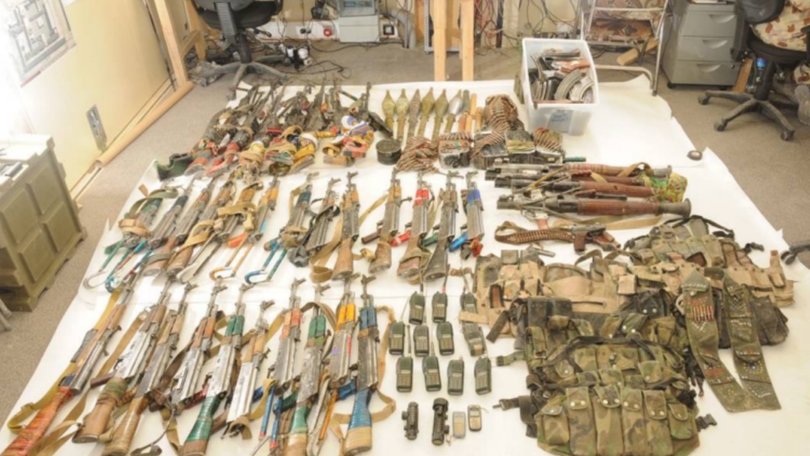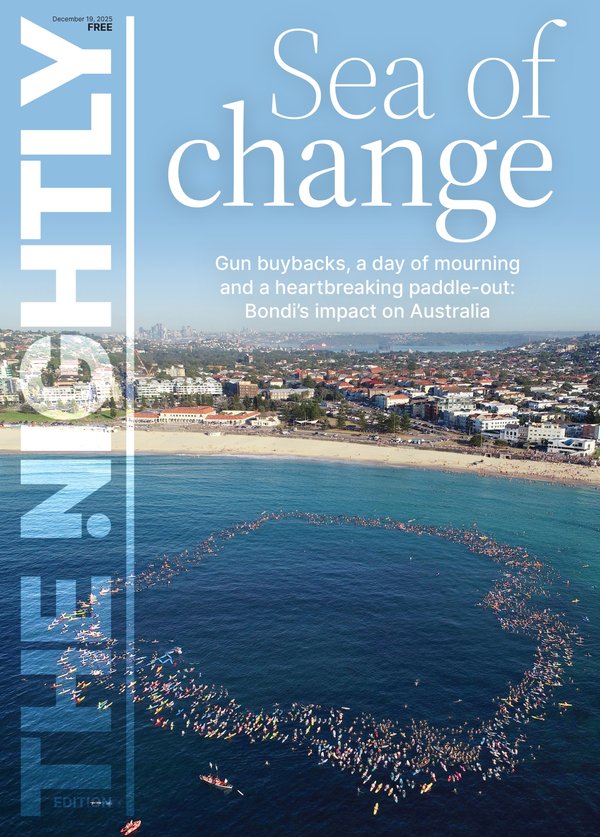AARON PATRICK: Before an Afghan went rogue in Washington, the SAS almost experienced a similar betrayal

Members of the SAS regiment had so little trust in their Afghan allies that they forced government soldiers to surrender their mobile phones before missions to prevent them contacting relatives and telling them the elite force was on the way.
SAS veterans said they were saddened, but not surprised, by the shooting of two US National Guardsmen outside a Washington train station Wednesday afternoon, allegedly at the hands of an Afghan former-CIA paramilitary soldier.
The Perth-based regiment was required to take policemen employed by a warlord in Southern Afghanistan during the 20-year war, forcing the Australians to rely on men they did not trust and feared might turn against them.
Sign up to The Nightly's newsletters.
Get the first look at the digital newspaper, curated daily stories and breaking headlines delivered to your inbox.
By continuing you agree to our Terms and Privacy Policy.“It’s hard to imagine how fraught the vetting process is to get background checks on a country that doesn’t have anything like that,” one SAS veteran said Friday.
“You would ask: ‘When were you born?’ They would say: ‘Summertime.’ ’What year?’ ‘No, you are not that old. That would make you almost 100 years old’.”
The shooting of West Virginia National Guard members Andrew Wolfe, 24, and Sarah Beckstrom, 20, has triggered a backlash in the US against Afghans admitted into the US after the 20-year war.
Staff Sergeant Wolfe’s condition is critical. Specialist Beckstrom died on Thursday, the US Thanksgiving holiday, from wounds inflicted by a .357 calibre revolver allegedly fired by Rahmanullah Lakanwal, an Afghan national who entered the US in 2021 and was granted asylum in April.
“She was savagely attacked,” President Donald Trump said.
Mr Trump said there was “no vetting” by the Biden administration of the Afghans fleeing Taliban rule in the impoverished nation. The administration said it would re-examine decisions to admit immigrants from 19 nations, including Afghanistan.
Mr Lakanwal was shot at the scene and is under guard at a hospital in the Washington area. The CIA acknowledged he was a member of a “Zero Unit”, which were accused by human rights groups of carrying out executions in Kandahar province, where the SAS operated too.
While SAS soldiers have been accused of executing prisoners and killing civilians in Afghanistan, little attention has been given to reports of abuses by Afghan government soldiers Australian units reluctantly worked with.

Under an agreement with the then-Afghan government, the Army required SAS teams to operate with policemen under the control of a warlord named Matiullah Khan.
In 2010, about half a dozen of Khan’s policemen opened negotiations during the Battle of Tizak with the Taliban to change sides, according to multiple SAS veterans.
In return for killing as many Australians as possible the Afghans were promised safe passage out of the village, according to a conversation overheard by an interpreter.
Ultimately the SAS defeated the Taliban force, which was three times as large, a victory recognised as the greatest in modern history by the award of the first battle honours since the Vietnam War.
No investigation was carried out by the Army, which did not respond to a request for comment on Friday about the prospective mutiny in Tizak or the pressure on the SAS to operate with Afghan forces.
SAS were forced to take phones used by Afghan soldiers before missions to prevent them contacting relatives, friends or other people in villages that would be the target of raids. Sometimes the Afghan hid their phones and still warned villagers they were on the way, one veteran said.
On a mission in 2013 an Afghan policeman operating with the SAS shot a boy aged approximately 13 in a village in Southern Afghanistan when he ran out of building, according to a military source.
The Australians were not being shot at. The SAS soldiers immediately provided medical help to the child and called in a helicopter to transport him to a military hospital at Tarin Kowt, the headquarters of Australian special forces, the source said.
“That stuff would happen all the time,” one veteran said Friday. “We didn’t select them. They were terrible to work with.”
When the SAS raided houses and villages looking for Taliban commanders, the Afghan policemen with them often robbed the homes. Some functioned as shops, and the policemen would take food and cigarettes, the source said.
The behaviour of the Afghan forces became so bad that SAS units travelling by vehicles would leave their allies well before they reached their target, and collect them on their way back to base, one veteran said.
Later in the war, when the SAS used helicopters more than vehicles, that approach became impossible.
Some Afghan military leaders were likely working with Western forces and the Taliban to enrich themselves.

In 2010, an SAS unit know as E troop tracked a Taliban arms dealer to a compound a few kilometres from their base in Tarin Kowt. The Australians found a large ammunition supply in a water tank buried under the ground.
As they were collecting the ammunition and several machine guns, Khan arrived with a group of armed policemen and told the Australians to leave. The Australians refused and the Afghans backed down. Khan was killed by an assassin in 2015.
“The problem was they were too lazy to conduct the fight themselves,” another SAS veteran said on Friday. “We didn’t trust them because they could go rogue at any time.”
Australian military officials said during the war it was necessary to work with Afghan forces because of the limited number of foreign troops and the inevitability Western countries would withdraw, leaving the Afghan government to defend itself.
The CIA said reports of war crimes by its Afghan units were Taliban propaganda, and that the units helped evacuate foreigners and help Afghans flee the country when the Taliban took over in August, 2021.
The following year Australia decided to admit 15,000 Afghan refugees, prioritising those who worked with Australian forces.

